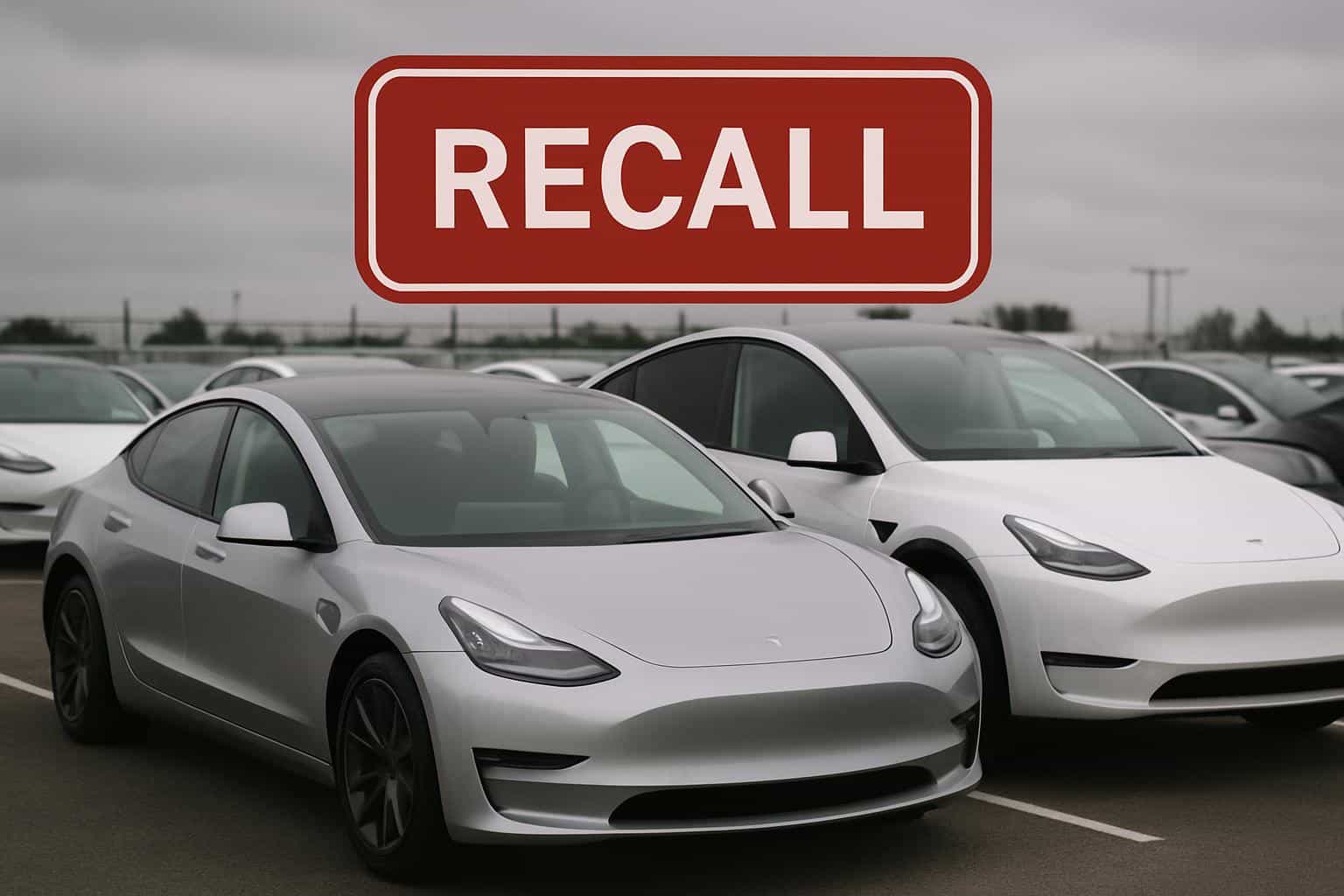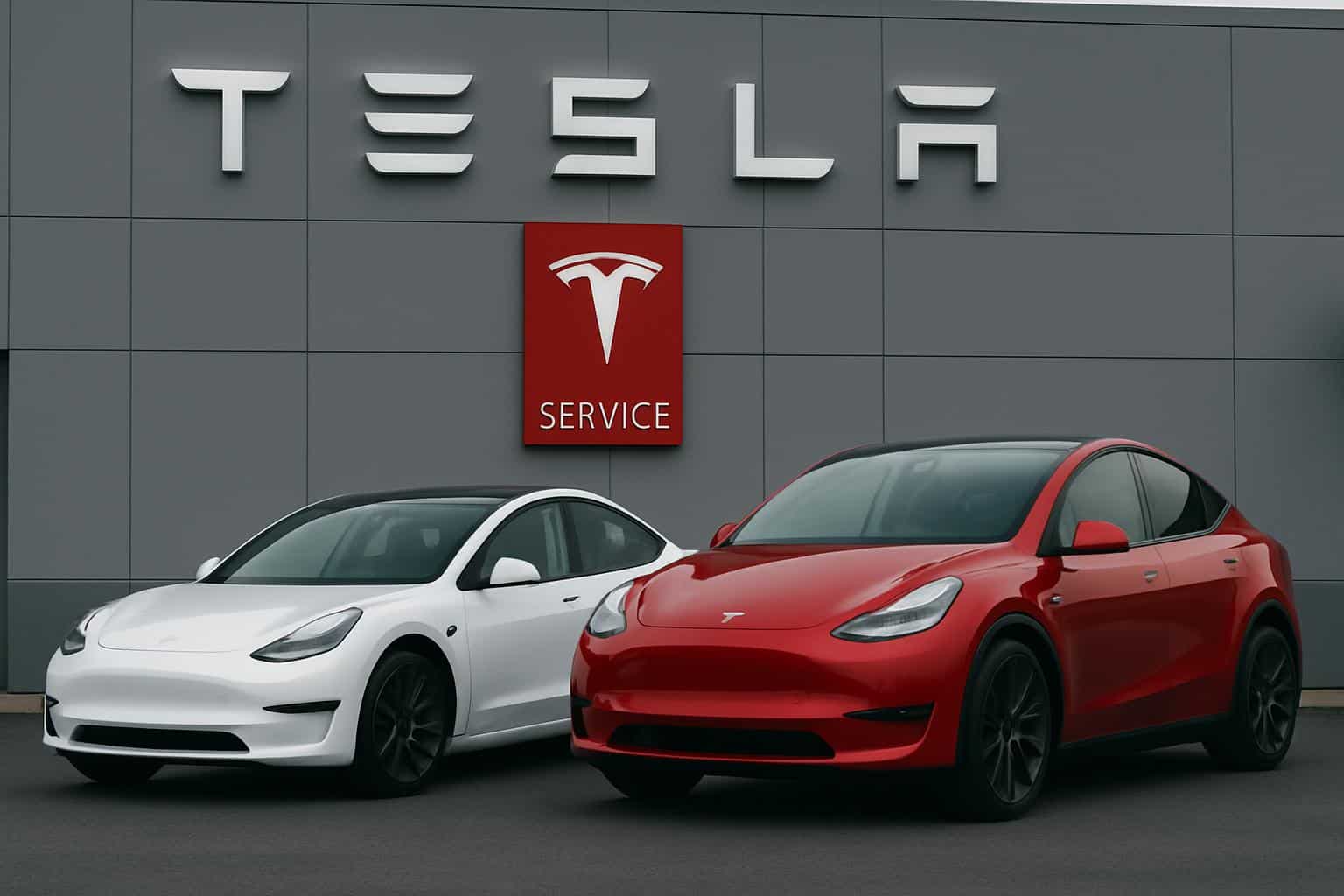Tesla is recalling more than 13,000 new Model 3 and Model Y vehicles to address a problem with a component that can fail, leaving drivers without sufficient warning when the car’s battery is about to lose power. The company reported the issue in a filing with the National Highway Traffic Safety Administration, which wrote that roughly 1 percent of vehicles being recalled could have the defect. Unlike a lot of the Tesla repair fixes that we see that are delivered through software, this fix will require an appointment at a service center for hardware replacement, but it won’t be coming out of the pockets of owners.
What Triggered the Recall and How the Defect Occurs
As described in a defect report filed by the NHTSA, the contactor in the high-voltage battery pack may open due to a poor connection at coil termination of the contactor while driving. If that occurs, the vehicle may lose drive power suddenly. Steering and regular brakes are still active, but instant power loss and loss of regenerative braking can cause a crash, especially in heavy traffic or while passing.

Tesla reported 36 warranty claims and 26 field reports associated with the issue and said it was unaware of crashes, injuries or fatalities related to the defect. The recall applies to the Model 3 and Model Y vehicles built within a specific period this year, with the automaker and regulator noting that only a small percentage of that pool was likely to have the defect.
A contactor serves as a heavy-duty snap switch that connects and disconnects the high-voltage battery from the drive units. Bad termination of the actuating coil of the contactor will cause intermittent operation, i.e., this may happen because of vibration, heat cycling due to temperature change or electrical load, etc. This is a popular failure mode for the industry; Ford, for instance, dealt with loss of power due to a contactor issue in the Mustang Mach-E through some combination of soft limiting and new hardware. In Tesla’s situation, the problem is located in a hardware tolerance that will need to have contactors replaced.
Why This Recall Is Unusual for Tesla’s Service Model
Tesla frequently relies on over-the-air updates to adjust thermal limits, recalibrate sensors or alter diagnostic thresholds, which means that many recalls can be made with Tesla’s customers barely noticing a problem in the first place, and without having to bring their cars into service centers. A mechanical fault within a sealed high-voltage pack is another can of worms though. The suspected contactor will need to be replaced in person, as it requires high-voltage safety procedures and unique tooling.
Tesla will issue instructions to owners, who can check whether their vehicle is affected by looking up its vehicle identification number through the NHTSA recall portal or the Tesla app.
Repairs will be conducted at no cost to Tesla owners at Tesla service centers, and dealers will be alerted as the parts become available so that they can schedule affected vehicles for servicing with minimal downtime.

What Owners Should Do Now and How to Stay Safe
- Recent Model 3 and Model Y owners should check their VINs for open recalls and schedule a service appointment right away if their vehicle is affected.
- If the car shows errors related to the electrical system, powertrain or reduced power, park in a safe place off the road and contact Tesla roadside assistance or a service center.
- While the issue hasn’t been resolved, drivers may find that regenerative braking has disappeared or acceleration is suddenly reduced; traditional brakes do work.
As with any propulsion-related recall, time is of the essence. The NHTSA tells drivers not to disregard safety notifications and to drive with updated software so the vehicle’s diagnostics and alerts work properly while waiting for the hardware fix.
The Broader Safety Context and Ongoing Tesla Scrutiny
The recall comes during increased regulatory scrutiny of Tesla’s safety practices. Nearly 2.9 million Tesla vehicles with the company’s Full Self-Driving package are under investigation by NHTSA after reports that drivers using those features engaged in traffic violations and collisions. The regulator’s broader scrutiny has also extended to Tesla’s much-vaunted Cybertruck, which has been the subject of several recalls — this year, its accelerator pedal may become trapped and last year it was over concerns about exterior trim.
It’s worth noting that this is a voluntary recall, which is what manufacturers resort to when they learn of possible defects in their products before those breakages translate into injuries or enforcement. That melding of data from the field, warranty trends and componentry is a textbook example of how safety problems emerge and are addressed in modern vehicles, electric or otherwise.
Outlook for Model 3 and Model Y Owners After the Recall
For those who were affected, the solution is simple: swap a part that’d maintain the battery pack’s switching hardware for its intended longevity. However, a service visit is less convenient than getting a software push, and the fix hits squarely at one of the likely root causes, so hopefully we won’t be talking about this issue again. The episode also demonstrates a larger point about EV reliability: Software can fix much, but high-voltage hardware still has to endure the bumps and grinds of daily driving.
The report’s takeaway is practical more than frightening. Watch for alerts about the free repair when your VIN becomes available, but continue to drive your vehicle as usual and be on the alert for any warning lights or unusual sounds. With the fix now in place, Model 3 and Model Y owners can anticipate no lingering impact on their vehicles’ day-to-day performance or safety.

